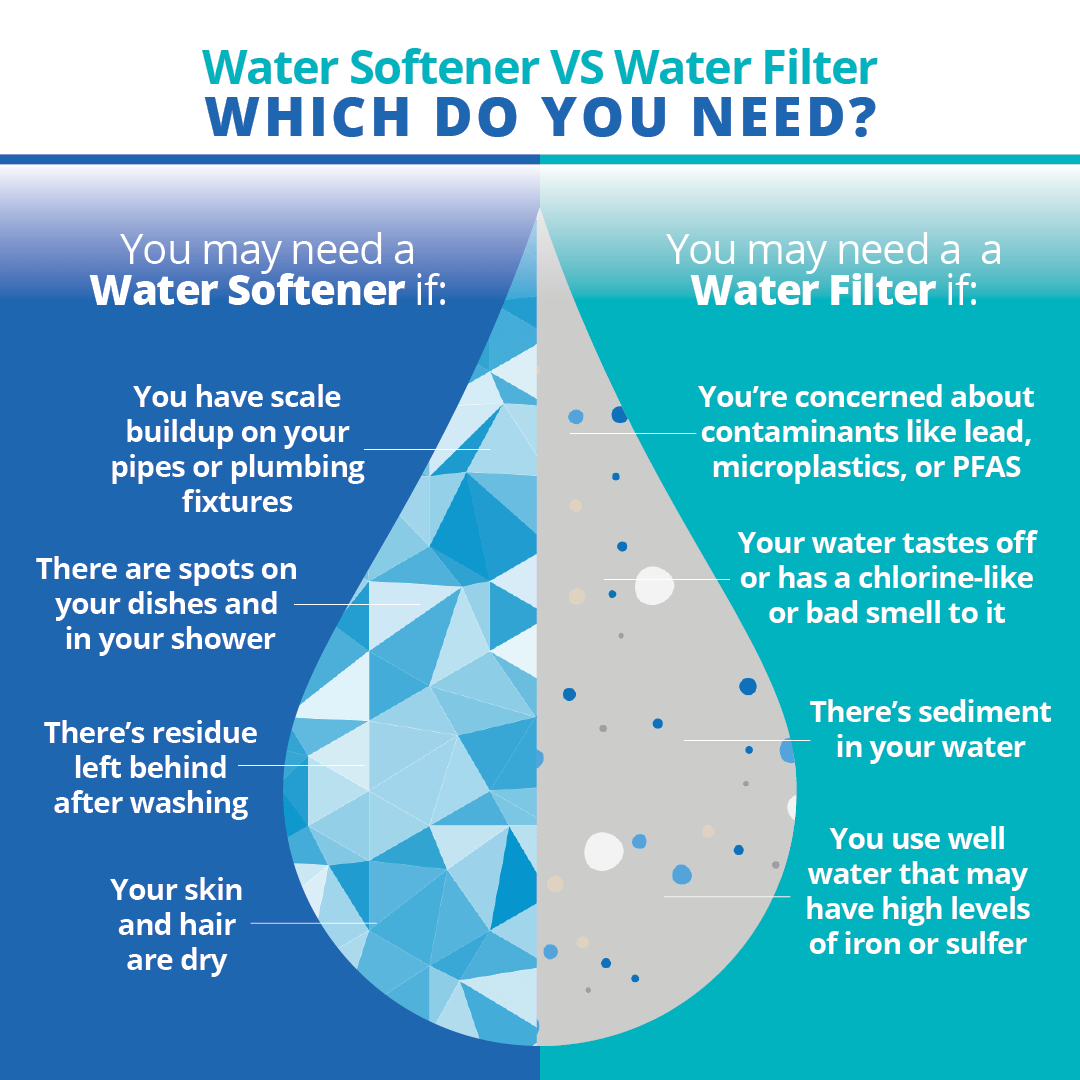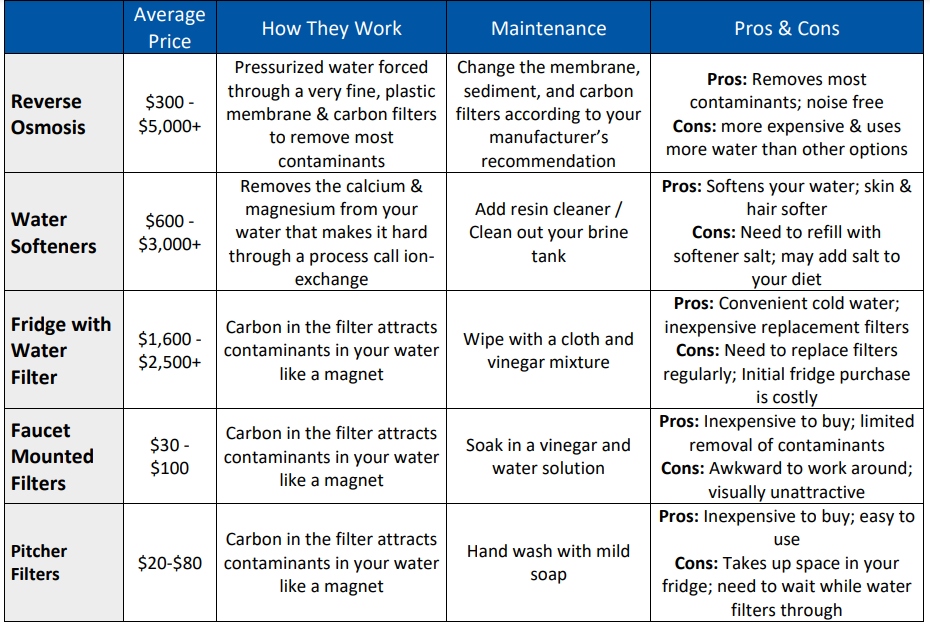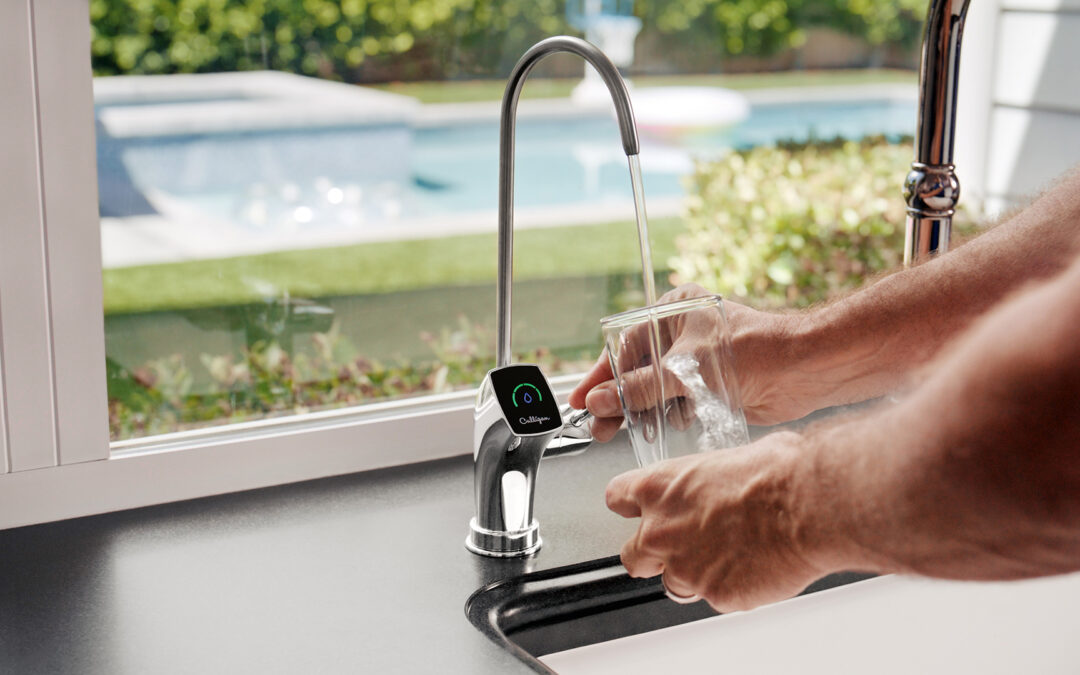Imagine sipping on a glass of water that’s as pure and refreshing as a mountain spring. That’s the promise of reverse osmosis water softeners.
But, before you decide to invest in one, it’s crucial to weigh the advantages and disadvantages. This guide will help you navigate the nuances of this popular water treatment option. Are you curious to know how it can affect your home, your health, and your wallet?
You might be surprised by what you find. Keep reading to discover whether a reverse osmosis water softener is the right fit for your lifestyle and needs. Your perfect glass of water might just be a few paragraphs away.

Credit: www.aquasana.com
Reverse Osmosis Basics
Reverse osmosis is a popular water filtration method that many households use to soften water and improve its quality. If you’ve ever wondered about the process behind those sleek filtration systems, you’re not alone. Understanding the basics of reverse osmosis can help you decide if it’s the right choice for your home.
How Does Reverse Osmosis Work?
Reverse osmosis (RO) uses a semi-permeable membrane to remove impurities from water. Water pressure pushes the water through this membrane, leaving contaminants behind. It’s a straightforward method that effectively reduces minerals and other impurities.
You might be surprised at how versatile an RO system can be. It can filter out everything from salt to heavy metals. This makes it a popular choice for those looking to improve water taste and safety.
Key Components Of A Reverse Osmosis System
A typical reverse osmosis system consists of several stages. These include pre-filters, the RO membrane, and post-filters.
Pre-filters remove larger particles like dirt and chlorine, which can damage the membrane. The heart of the system, the RO membrane, does the heavy lifting by filtering out smaller impurities.
Post-filters polish the water before it reaches your tap, ensuring it tastes fresh. This multi-stage process ensures that the water you drink is as clean as possible.
Common Uses Of Reverse Osmosis Systems
Many households use RO systems for drinking water. But did you know they are also used in aquariums and in the food industry?
In my own experience, installing an RO system improved the taste of my coffee and tea. It can be a game-changer for anyone who values the purity of their water.
RO systems are also popular in regions where water quality is a concern. Is it time for you to consider one for your home?
Benefits And Drawbacks Of Reverse Osmosis
The benefits of reverse osmosis are clear. It provides high-quality water and reduces the need for bottled water.
However, it’s important to consider the drawbacks too. RO systems can waste water, and the filtration process might remove beneficial minerals.
Balancing these pros and cons is crucial. Could the benefits of an RO system outweigh its disadvantages in your household?
Understanding these basics can guide you in making an informed decision. If water quality is a priority, reverse osmosis might be worth exploring further.
How Reverse Osmosis Works
Reverse osmosis is a popular method for purifying water. It uses a special membrane to remove impurities. The process is effective and reliable. Let’s explore how reverse osmosis works.
Understanding The Basics Of Reverse Osmosis
Reverse osmosis involves passing water through a semi-permeable membrane. This membrane filters out contaminants and allows only clean water to pass. It acts as a barrier for unwanted particles.
The Role Of Pressure In Reverse Osmosis
Pressure is essential in reverse osmosis. It pushes water through the membrane. Without pressure, the process would not work. The pressure must be higher than the osmotic pressure.
Membrane Functionality In Reverse Osmosis
The membrane is the key component. It traps impurities, salts, and other particles. Only water molecules pass through. This ensures a high level of purity.
Stages Of Filtration In Reverse Osmosis
Reverse osmosis systems have multiple filtration stages. Each stage removes different contaminants. Pre-filters remove larger particles. Post-filters enhance taste and quality.
Benefits Of Reverse Osmosis Filtration
Reverse osmosis improves water quality significantly. It removes harmful substances and odors. The result is pure, clean, and safe drinking water.
Key Advantages
Reverse osmosis water softeners have become a popular choice for households looking to improve their water quality. Understanding the key advantages can help you decide if this system is right for you. Let’s dive into the benefits that make reverse osmosis systems stand out in the realm of water purification.
Improved Water Quality
Imagine enjoying a glass of water that tastes fresh and pure. Reverse osmosis systems can deliver just that by effectively removing impurities. These systems enhance the flavor and clarity of water, offering a refreshing experience every time.
Have you ever noticed a strange taste in your tap water? With reverse osmosis, you can say goodbye to unpleasant flavors caused by minerals and contaminants. Your morning coffee or evening tea will taste significantly better when made with purified water.
Reduction Of Contaminants
Reverse osmosis systems excel in eliminating harmful substances from your water supply. They can remove up to 99% of common contaminants like lead, chlorine, and nitrates. This reduction in impurities ensures a healthier drink for you and your family.
Think about the peace of mind knowing that your water is free from harmful substances. It’s like having a safeguard against potential health risks lurking in untreated water. You can trust that your water is safe for drinking and cooking.
Versatility In Use
These systems aren’t just limited to kitchen faucets. Reverse osmosis units are versatile and can be installed in various locations within your home. From refrigerators to ice makers, you can enjoy purified water throughout your living space.
Have you considered using purified water for your plants or pets? The versatility of reverse osmosis systems means you can extend the benefits beyond personal consumption. Think about how this could enhance your overall lifestyle.
What areas in your home could benefit from improved water quality? The flexibility of reverse osmosis systems allows you to explore different possibilities for enhancing your everyday experiences.
Credit: espwaterproducts.com
Environmental Benefits
Reverse Osmosis (RO) water softeners offer significant environmental benefits. These systems reduce the need for harsh chemical water treatments. This makes them a greener choice for water purification. Understanding these advantages can help you make an informed decision about water treatment options.
Reduction In Chemical Usage
Traditional water softeners use salt and other chemicals. RO systems minimize this need, reducing chemical waste. Less chemical usage means fewer pollutants entering waterways. This helps preserve aquatic ecosystems.
Energy Efficiency
RO systems often use less energy compared to other purification methods. Their efficiency reduces the overall carbon footprint. Lower energy consumption leads to less environmental impact. It’s a win for both the planet and your utility bills.
Minimal Waste Production
RO systems produce less solid waste. They generate fewer waste products during filtration. This means less landfill contribution. It supports sustainable waste management practices.
Conservation Of Water Resources
RO systems can improve water quality without excess water usage. They help conserve valuable water resources. This is essential in areas facing water scarcity. Efficient water use benefits both the environment and communities.
Potential Drawbacks
Reverse osmosis water softeners come with several benefits. Yet, they also have potential drawbacks. Understanding these can guide purchasing decisions. Let’s explore some key concerns.
Water Wastage Concerns
Reverse osmosis systems use more water than they produce. For every gallon of purified water, several gallons are discarded. This can increase water bills. Also, it raises environmental concerns. Many seek more sustainable options.
Initial Setup Costs
The initial cost of reverse osmosis systems can be high. This includes equipment and professional installation fees. For many, this cost is a barrier. It’s important to budget carefully. Consider long-term savings on bottled water.
Maintenance Requirements
Regular maintenance is crucial for these systems. Filters need frequent replacement. Membranes also require attention. Ignoring upkeep can lead to poor water quality. Maintenance can be costly and time-consuming. It’s a factor to consider.
Comparing With Traditional Softeners
Reverse osmosis water softeners differ from traditional ones by removing minerals more thoroughly. They offer improved taste and purity but can be less efficient in terms of water waste and energy use. Balancing cost and environmental impact is crucial when considering these systems for home use.
Comparing Reverse Osmosis (RO) water softeners with traditional systems can be eye-opening. Each method has unique benefits and drawbacks. Understanding these can guide you in making the right choice for your home. Let’s dive into the specifics and see how these systems stack up against each other.Installation And Maintenance
Traditional softeners often require complex installation. They may involve plumbing changes. RO systems are usually easier to set up. Maintenance for RO systems is straightforward. You just replace filters periodically. Traditional systems need regular salt refills. This can be cumbersome.Water Quality
RO systems remove many impurities. They provide cleaner water. Traditional softeners primarily remove minerals like calcium and magnesium. They do not filter out contaminants. RO water is often purer. It tastes better to many people.Environmental Impact
Traditional softeners use salt, which can harm the environment. Salt discharge can affect soil and water bodies. RO systems waste some water during filtration. This can be a concern in dry areas. Both systems have environmental impacts. Choose wisely based on your priorities.Cost
Initial costs for RO systems can be higher. They offer long-term savings on maintenance. Traditional softeners may seem cheaper upfront. Ongoing salt purchases add up over time. Consider both initial and operational costs.Space Requirements
Traditional softeners can be bulky. They need significant space for tanks. RO systems are compact. They fit neatly under sinks. This makes them ideal for smaller homes. Understanding these differences helps you choose the right system. Each has its place depending on needs and preferences. Make an informed decision for your home’s water quality.Cost Considerations
Reverse osmosis water softeners can be expensive to install and maintain. They offer effective water purification but might not fit every budget. Balancing cost and benefits is crucial for deciding if it’s the right choice.
Considering the cost of a reverse osmosis water softener is crucial before making a purchase. Many people assume that such systems are expensive, but there are hidden costs and savings to consider. Is the upfront investment worth the long-term benefits?Initial Purchase Price
The initial cost of a reverse osmosis water softener can be a significant investment. Prices typically range from a few hundred to several thousand dollars, depending on the size and brand. You may find cheaper options, but it’s essential to weigh quality against cost.Installation Expenses
Installation can add to the overall cost. Some systems require professional installation, which can be an additional expense. Others may offer DIY options, saving you money but requiring your time and effort.Maintenance Costs
Maintenance is another factor affecting the total cost. Filters need regular replacement, which can be a recurring expense. Consider how often you’ll need to change them and factor this into your budget.Energy Consumption
Reverse osmosis systems can increase your utility bills. They use electricity to operate, so it’s vital to check the energy efficiency of the unit. Would you be willing to pay more for a system that uses less energy?Long-term Savings
Despite the costs, there are potential savings. By improving water quality, these systems can extend the life of appliances like dishwashers and washing machines. They can also reduce the need for cleaning supplies, saving you money in the long run.Value For Money
Ultimately, the decision hinges on whether the benefits outweigh the costs. Consider the health benefits of cleaner water and the potential savings from less wear on appliances. Is the peace of mind worth the price tag? As you weigh these factors, think about your priorities and budget. Understanding the full financial picture can guide you to a decision that best fits your needs.Suitability For Different Needs
Reverse osmosis water softeners have become popular in many households. Their ability to purify water makes them appealing. Yet, they may not suit everyone’s needs. Understanding their suitability can help make informed choices.
Efficiency In Removing Contaminants
Reverse osmosis systems excel at removing contaminants. They eliminate heavy metals, bacteria, and viruses. This makes them ideal for areas with poor water quality. Families can rely on clean, safe water.
The cost of reverse osmosis systems can be high. Initial purchase and installation might deter some. Regular maintenance adds to the expense. Consider this before choosing a system.
Household Size And Usage
Household size impacts the suitability of these systems. Larger families may need more water. Reverse osmosis systems can be slow. This could lead to inconvenience during peak usage times.
Space Requirements
Space is crucial when installing a reverse osmosis system. They require ample space under the sink. Small apartments may not accommodate these systems. Measure your space before deciding.
Environmental Impact
Reverse osmosis systems waste water during filtration. This may concern environmentally conscious individuals. Seek alternatives if water conservation is a priority.
Future Trends In Water Treatment
In the realm of water treatment, innovation continues to shape the future. New technologies emerge, transforming how we purify and soften water. Reverse osmosis systems are at the forefront, offering both advantages and challenges. Understanding the latest trends helps us grasp where water treatment is heading.
Emerging Technologies In Water Treatment
Advanced filtration techniques are gaining traction. Nanotechnology is playing a pivotal role in enhancing water purification. It offers solutions that are efficient and environmentally friendly. These methods ensure cleaner water with fewer chemicals.
Integration Of Smart Systems
Smart systems are becoming integral to water treatment. They enable real-time monitoring and adjustment. Users gain insights into their water usage patterns. This leads to better efficiency and conservation.
Eco-friendly Solutions
Eco-friendly approaches are increasingly popular. Water treatment systems focus on reducing waste and conserving energy. This trend aligns with global efforts to protect the environment. Sustainable practices are vital for future advancements.
Cost-effective Alternatives
Cost remains a significant factor in water treatment. Innovations aim to lower expenses while maintaining quality. Affordable solutions are accessible to a broader audience. This trend makes clean water more attainable.
Customization For Specific Needs
Customization in water treatment is emerging. Systems are tailored to meet individual requirements. This approach enhances user satisfaction and effectiveness. People enjoy solutions that fit their unique situations.

Credit: www.watersmartsystems.com
Frequently Asked Questions
What Is Reverse Osmosis Water Softener?
Reverse osmosis water softener uses a semi-permeable membrane to remove impurities. It effectively reduces hardness by filtering out minerals like calcium and magnesium. This process results in softer, cleaner water, ideal for household use. It’s a popular choice for improving water quality and taste.
How Does Reverse Osmosis Benefit Water?
Reverse osmosis benefits water by removing contaminants and impurities. It eliminates minerals, salts, and chemicals, providing clean and safe drinking water. The process enhances taste and clarity, making it suitable for cooking and drinking. It also reduces scale buildup in appliances, extending their lifespan.
Are There Disadvantages To Reverse Osmosis Systems?
Yes, reverse osmosis systems have some disadvantages. They can be costly to install and maintain. The process also wastes some water, reducing efficiency. Additionally, it removes essential minerals, which may require remineralization. Despite these drawbacks, many find the benefits outweigh the negatives.
Is Reverse Osmosis Water Healthier?
Reverse osmosis water is healthier because it removes harmful contaminants. It filters out bacteria, lead, and chemicals, making it safer to drink. However, it also removes beneficial minerals, which some argue affects overall health. Many people use mineral supplements to compensate for this loss.
Conclusion
Exploring reverse osmosis water softeners? Weighing pros and cons is crucial. These systems improve water quality by removing impurities. They also reduce mineral buildup. But, they can be costly and waste water. Maintenance demands attention, too. Consider your home’s specific needs.
Understand your budget constraints. Think about long-term benefits versus initial costs. Reverse osmosis systems offer clear water, but at a price. Make an informed decision. Choose what suits your lifestyle best. Your water, your choice.

Hasan Al Sarker is a Reverse Osmosis Specialist. He has worked for many years to ensure safe drinking water for all. His research paper has been published in several journals, including Issue, Medium, and Slideshare. He is recognized as a water doctor among specialists though he did not attend medical college.
Besides working as a researcher of reverse osmosis technology, he is also very fancy with the kitchen and cooking. His guides are reading thousands of people every day. As a head of content, he is responsible for all the published articles at RO System Reviews.

